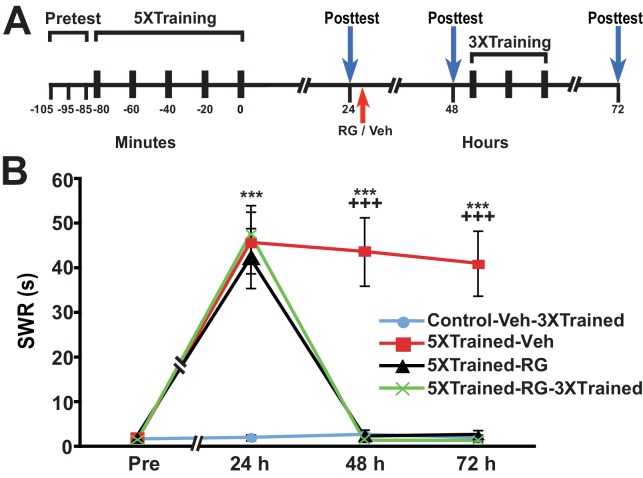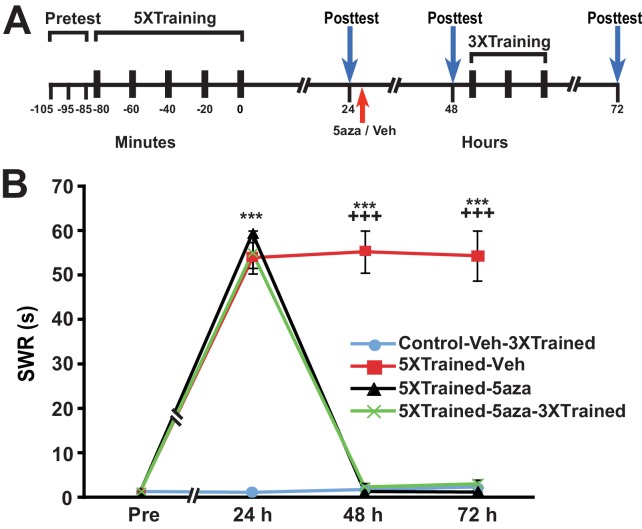Figure 6. Inhibition of DNMT with RG108 eliminates established LTS in Aplysia.
(A) Experimental protocol. The occurrences of the pretests, training, posttests, and drug/vehicle injections are shown relative to the end of the last training session. Either RG108 or vehicle was injected into the animals at the time indicated by the red arrow. After the 48-h posttest, animals in the Control-Veh-3XTrained and 5XTrained-RG-3XTrained groups received 3 bouts of sensitization training. (B) RG108 treatment at 24 h after training abolished LTS. There were four experimental groups: Control-Veh-3XTrained group (n = 6), 5XTrained-Veh group (n = 6), 5XTrained-RG group (n = 6), and 5XTrained-RG-3XTrained group (n = 6). A repeated-measures ANOVA disclosed a significant group x time interaction (F[9,60] = 22.9, p < 0.0001). Subsequent planned comparisons showed that the overall differences among the four groups for the 24-, 48- and 72-h posttests were highly significant (24 h, F[3,20] = 13.8, p < 0.0001; 48 h, F[3,20] = 28.6, p < 0.0001; and 72 h, F[3,20] = 27.9, p < 0.0001). Animals in all three groups trained with five bouts of tail shocks exhibited significant sensitization at 24 h, as indicated by SNK posthoc tests. Thus, the mean SWR was longer in the 5XTrained-Veh (45.7 ± 6.9 s), 5XTrained-RG (42.2 ± 6.7 s), and 5XTrained-RG-3XTrained (47.5 ± 6.5 s) groups than that in the Control-Veh-3XTrained group (2.0 ± 0.7 s; p < 0.001 for each comparison). However, although the 5XTrained-Veh group exhibited significant sensitization on both the 48-h (mean SWR = 43.7 ± 7.6 s) and 72-h (mean SWR = 41.0 ± 7.3 s) posttests, sensitization was absent in both groups of RG108-treated animals after 24 h. Posthoc tests revealed no significant differences for any of the comparisons between the Control-Veh-3XTrained group and the 5XTrained-RG group, or the 5XTrained-RG-3XTrained group, on the posttests after 24 h. Therefore, inhibiting DNMT with RG108 24 h after training erased established LTS. There was no evidence of spontaneous recovery of sensitization over the 48-h period after RG108 injection; furthermore, three additional bouts of training failed to reinstate LTS. Asterisks, comparisons of the 5XTrained-Veh, 5XTrained-RG, and 5XTrained-RG-3XTrained groups with the Control-Veh-3XTrained group at 24 h; and comparison of the 5XTrained-Veh group with the Control-Veh-3XTrained group at 48 h and 72 h. Plus signs, comparisons of the 5XTrained-Veh group with the 5XTrained-RG and 5XTrained-RG-3XTrained groups at 48 h and 72 h.


